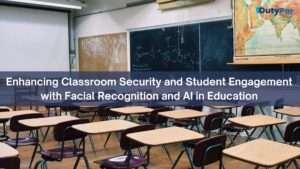 Facial recognition technology has come a long way in recent years, and its applications in education are growing at a rapid pace. From enhancing classroom security to improving student engagement, facial recognition and AI (Artificial Intelligence) have the potential to revolutionize the education system. In this article, we will explore the benefits of facial recognition and AI in education and how they can be used to create a safer and more engaging learning environment.
Facial recognition technology has come a long way in recent years, and its applications in education are growing at a rapid pace. From enhancing classroom security to improving student engagement, facial recognition and AI (Artificial Intelligence) have the potential to revolutionize the education system. In this article, we will explore the benefits of facial recognition and AI in education and how they can be used to create a safer and more engaging learning environment.
What is Facial Recognition?
Facial recognition is a biometric technology that uses artificial intelligence to analyze and recognize the unique features of a person’s face. The technology captures an image of a person’s face and compares it to a database of known faces to determine their identity.
Facial recognition has become increasingly accurate and reliable in recent years, making it a popular choice for security and identification applications.
Enhancing Classroom Security:
Facial recognition technology can be used to enhance classroom security by identifying individuals who are not authorized to be on school premises. Schools can install cameras equipped with facial recognition technology at entry points to monitor that is entering and leaving the building.
This technology can also be used to track attendance, ensuring that students are in the correct classrooms during class time.
Facial recognition technology can also be used to identify individuals who pose a threat to the school community.
Schools can create a database of known individuals who are not allowed on school property, such as former students who have been expelled or parents who have been banned from school grounds.
If a person on the banned list is identified by the facial recognition system, school administrators can be alerted immediately, allowing them to take action to prevent potential security breaches.
Improving Student Engagement:
Facial recognition technology can also be used to improve student engagement in the classroom.
By analyzing facial expressions and other biometric data, teachers can gain insights into how students are feeling and adjust their teaching style accordingly. For example, if a student appears bored or disengaged, the teacher can use more interactive teaching methods to keep them engaged.
Facial recognition technology can also be used to personalize the learning experience for students.
By analyzing the facial expressions and other biometric data of students, teachers can tailor their lessons to meet the individual needs of each student. For example, if a student appears to be struggling with a particular concept, the teacher can provide additional support or resources to help them understand the material.
Challenges and Concerns:
Despite the many benefits of facial recognition and AI in education, there are also concerns about privacy and security. Some students and parents may feel uncomfortable with the use of facial recognition technology in schools, raising questions about consent and the ethics of using this technology on minors.
Conclusion
Facial recognition technology and AI have the potential to revolutionize the education system by enhancing classroom security and improving student engagement. By using facial recognition technology to monitor school premises and track attendance, schools can create a safer learning environment for students. Similarly, by analyzing biometric data, teachers can tailor their lessons to meet the individual needs of each student, improving student engagement and learning outcomes.
FAQs
What is facial recognition technology?
Facial recognition technology is a biometric technology that uses artificial intelligence to analyze and recognize the unique features of a person’s face.
How is facial recognition technology used in education?
Facial recognition technology is used in education to enhance classroom security by identifying individuals who are not authorized to be on school premises and to track attendance. It can also be used to improve student engagement by analyzing facial expressions and other biometric data.
What are the benefits of using facial recognition technology in education?
The benefits of using facial recognition technology in education include enhancing classroom security, improving student engagement, and personalizing the learning experience for students.
Are there any concerns related to the use of facial recognition technology in education?
Yes, there are concerns related to the use of facial recognition technology in education, including potential privacy and security concerns, and questions about consent and the ethics of using this technology on minors.
How accurate is facial recognition technology?
Facial recognition technology has become increasingly accurate and reliable in recent years, but there is still a risk of false positives and false negatives.